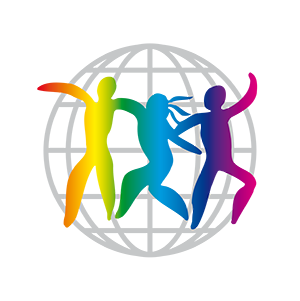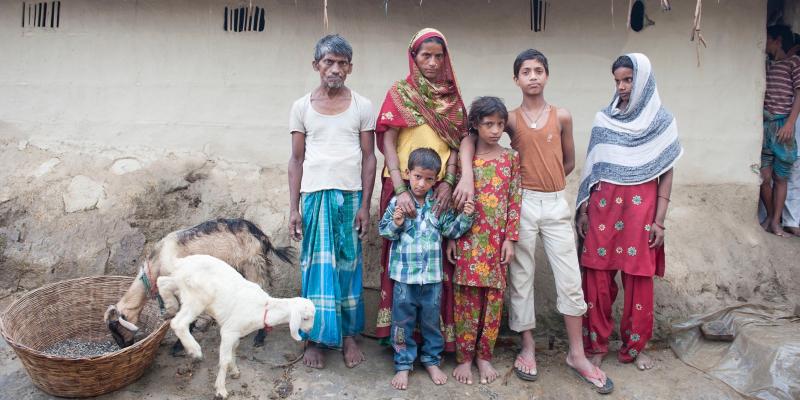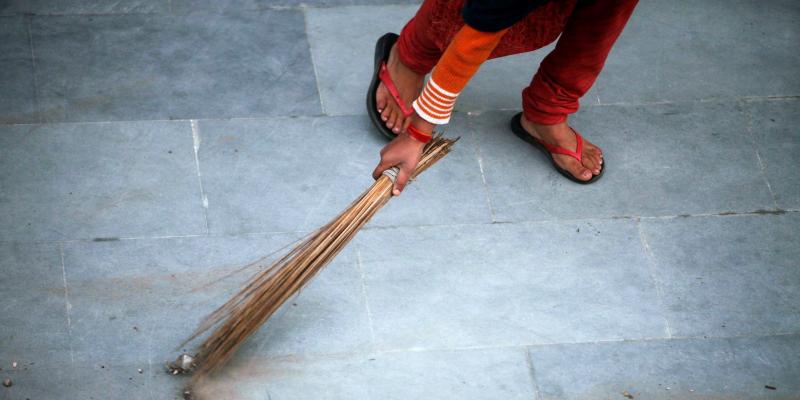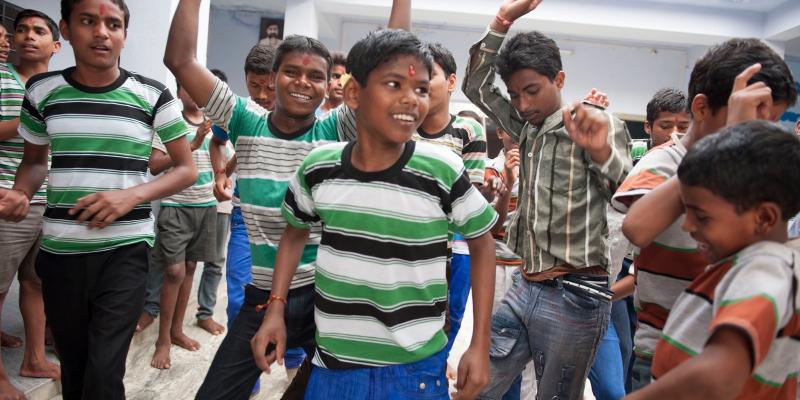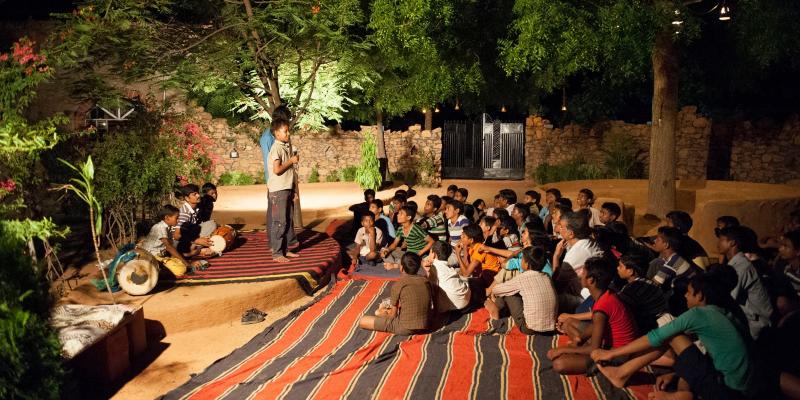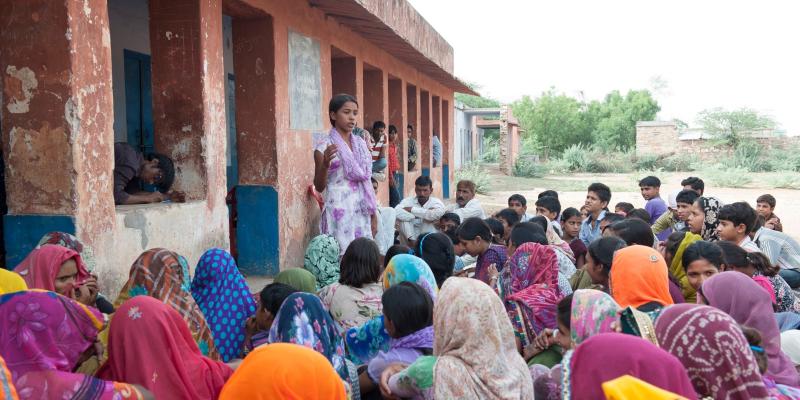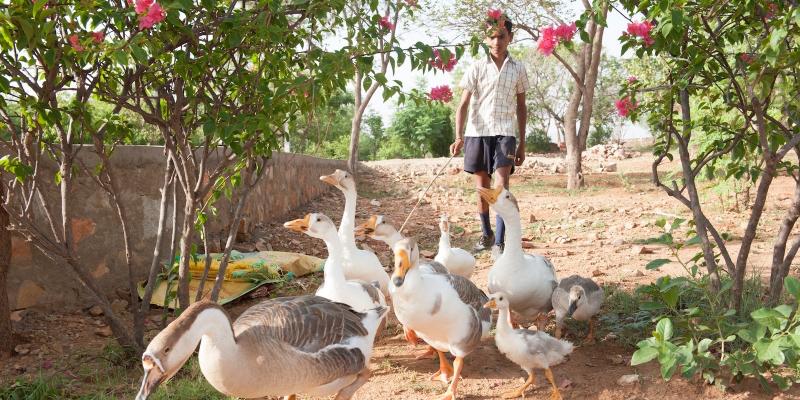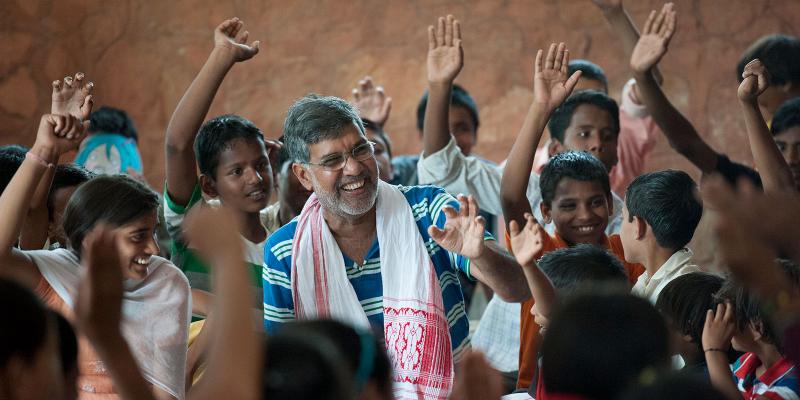At a brick kiln in Northern India, 27 families are being held as slaves. Young children make thousands of bricks every day, for 16 hours a day, under the burning sun. But today, the sky is dark and the rain is pouring. Kailash drives through the gates and screeches to a halt. He and his activists have come to free the child slaves.
As Kailash jumps out of the car, he is prepared for violent resistance. The kiln is usually protected by armed guards. But nothing happens. The place is deserted. Somebody has told the owner, and the slave workers have been taken away. Finally, Kailash finds the children, abandoned at the roadside not far from the kiln. They are dressed in rags and covered in dirt, soot and brick dust. They are afraid when Kailash approaches, but too exhausted to run away.
“We are here to help you. You are free now,” explains Kailash. The children stare at him – they don’t understand. They don’t know what freedom is. But they agree to get into the cars on the promise of food and water. All except one girl who is lying on the ground. Weak and burning with fever, she weeps and cries out, “Mummy, help me!”
The girl’s name is Gulabo and she is 14. She was born at the brick kiln and has worked here all her life. Years of breathing in brick dust have destroyed her lungs, and she dies just a few hours later.
No education
When Gulabo’s father comes to collect his daughter’s body to bury her, he says:
“If only I had been able to learn to read and write, we would never have become slaves and I wouldn’t have lost my daughter.” He explains to Kailash that a slave owner tricked him into signing a contract he couldn’t read with his thumb print. That’s how his family became slaves for 17 years. This father’s words help Kailash to realise that education is the key to ending slavery and poverty. But he has always believed that child labour is wrong.
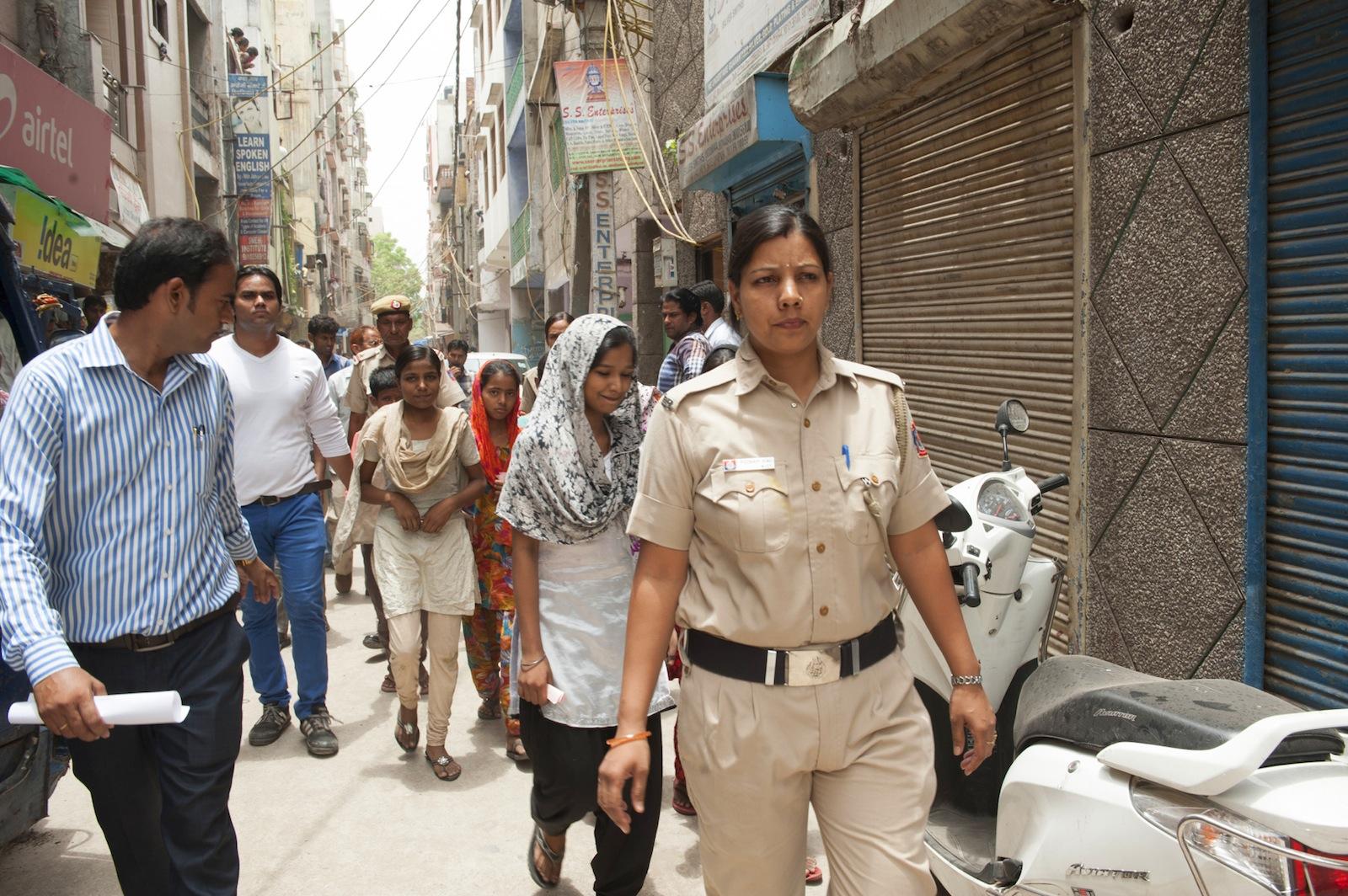
Kailash starts school
Kailash was both happy and nervous when he started school, proud of his new uniform and bag. He saw a boy of about his age sitting on the steps outside the school. Beside him sat a man, perhaps his father, with a shoe polishing box. Both were barefoot and dressed in dusty, dirty clothes.
Later that day, Kailash asked his teacher:
“How come we are sitting in this classroom, but that boy is sitting outside working?
Surprised, the teacher said:
“They are poor, and it’s normal for boys like that to work.”
For the first time, Kailash discovered that different children could have totally different lives. His own family was neither rich nor poor. They had enough, and lived a good life.
Every day on the way to school, Kailash saw the boy sitting outside. One day, he summoned the courage to speak to the father.
“Why can’t your son go to school?”
The father looked just as surprised as the teacher.
“Nobody has ever asked me that before. I’ve never thought about it. My father worked when he was a boy, and so did I, and now my son does. We were born to work.”
This seemed unfair, but what could Kailash do about it? He was only six years old.
Friends disappeared
When Kailash was twelve, several of his schoolmates were forced to quit school. They couldn’t afford school fees and school books. So Kailash walked all over town asking for people’s old books. In one day, he gathered 2000 school books. He started a book bank for poor children, and raised money by selling tea, polishing shoes and organising events with some friends.
Seeing injustice made Kailash angry. Most of all, he hated India’s ancient ‘caste system’. According to this system, everyone is automatically born into the same ‘caste’ as their family – a group that has a set value in society, either high or low. People’s lives are governed by rules on what jobs your ‘caste’ is allowed to do, and who you’re allowed to marry. The caste system was banned in India long ago, but it still exists.
There are also people who don’t have a caste. They are ‘casteless’ or ‘outcastes’, and they are usually very poor, have the dirtiest jobs, and are treated worse than everyone else. People with old-fashioned ideas say that the casteless people are ‘untouchable’. Kailash’s own mother only hit him once, when he was five years old and accepted a piece of bread from a ‘casteless’ child. He wasn’t allowed to eat something that an ‘untouchable’ had touched!
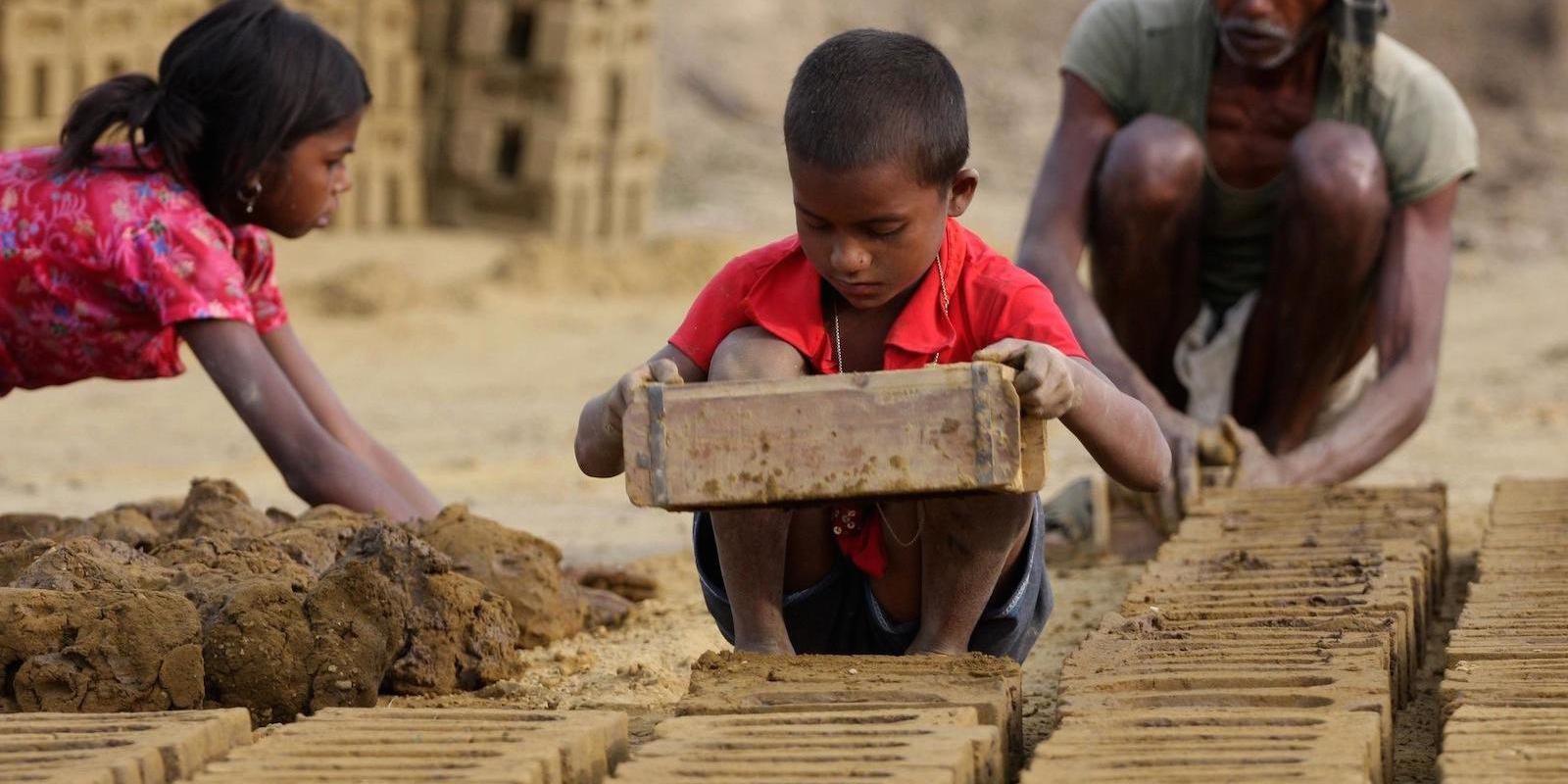
There are also people who don’t have a caste. They are ‘casteless’ or ‘outcastes’, and they are usually very poor, have the dirtiest jobs, and are treated worse than everyone else. People with old-fashioned ideas say that the casteless people are ‘untouchable’. Kailash’s own mother only hit him once, when he was five years old and accepted a piece of bread from a ‘casteless’ child. He wasn’t allowed to eat something that an ‘untouchable’ had touched!
Party for Gandhi
When he was 15 years old, Kailash wanted to organise a party to celebrate one hundred years since the birth of freedom champion Mahatma Gandhi. Gandhi hated the caste system too, and dreamed of an India where everyone was treated equally. Kailash invited a group of important leaders to a dinner where the food was to be prepared by ‘untouchables’. Everyone was to sit and eat together, as a symbol of friendship and justice.
Some said they would come, but on the day nobody turned up. And what’s more, the leaders decided that Kailash’s family should be excluded because they had eaten food prepared by ‘untouchables’. Kailash was angry.
“But even if we just save the life of one child, it’s worth it,”
“You cannot punish my family for something that I did on my own,” he said, and decided to give up his surname. Kailash’s family were sad, but from that day on he has called himself Kailash Satyarthi, which means ‘seeker of truth’.
Quit his job
Kailash’s mother thought it was obvious that since Kailash did well at school, he should become either an engineer or a doctor, and take care of the family. Kailash got a degree in engineering, but quit his well-paid job after just one year. He wanted to put all his time into helping poor children get a better life.
“My mother cried for years,” said Kailash later. “But I had to follow my heart.”
In those days, over 30 years ago, hardly anyone in India cared about the rights of the child. Child labour was against the law, but everyone ignored that. Some people thought Kailash was wrong and said:
“How will poor families survive if their children can’t work? Is it better that they starve to death?”
But Kailash knew that most child labourers only earned a couple of dollars a week, and that neither they nor their families could survive on that. And millions of adults were unemployed, just because employers would rather exploit children, who provided cheap labour without complaining.
Starting to free children
When Kailash began to travel around India he got a shock. The situation for children was worse than he had thought. Children were bought and sold like commodities and were held captive as slaves in factories and quarries, often hundreds of miles from their families. Some had been sold by their own parents. Others were kidnapped, or tricked into thinking they would get to go to school. One little slave girl asked Kailash:
“What does a dairy cow cost?”
“Between one thousand and fifteen hundred dollars,” replied Kailash.
“I was sold for just one hundred dollars,” said the girl.
Kailash wrote down the children’s stories and published his own magazine. He gave speeches and participated in debates in order to influence ordinary people and those in power. At the same time, he carried out his first rescue missions to set working children free. Sometimes it seemed hopeless to rescue ten or one hundred children, when millions were still held captive.
“But even if we just save the life of one child, it’s worth it,” said Kailash, who started off by going into factories and quarries without any help from the police or support from ordinary people. It was extremely dangerous, but he quickly gained lots of helpers, who were inspired by his struggle.
Dangerous mission
On one of his first raids, Kailash and his activists were beaten bloody by security guards, but they still managed to rescue 153 people.
Kailash and his helpers continued to rescue children while being shot at and attacked. Kailash was beaten about the head and body with fists and wooden sticks. One day, on a raid at a quarry, a security guard beat one of his closest colleagues to death.
Kailash went to court and demanded help from the police and a permit to rescue children. Without this permit, the guards could continue to beat the activists with the law on their side, because Kailash was trespassing on private land. Many police officers and even judges were bribed by the slave owners not to help Kailash. But finally, he managed to get his demands approved in court. Now he could carry out even more raids, and he received a lot of attention in newspapers and on TV. The mafia and those politicians who earned money from child labour got scared and started to threaten Kailash in letters and on the street. Someone tried to burn his house down, and one morning when the telephone rang his little daughter answered.
“Tell your father that we’re planning to kill him,” said a voice in the receiver.
Kailash was afraid, especially for his family.
“But the fact that the slave owners are attacking us just proves that we’re on the right track. It would be worse if nobody cared,” he said to his wife, Sumeda, who agreed.
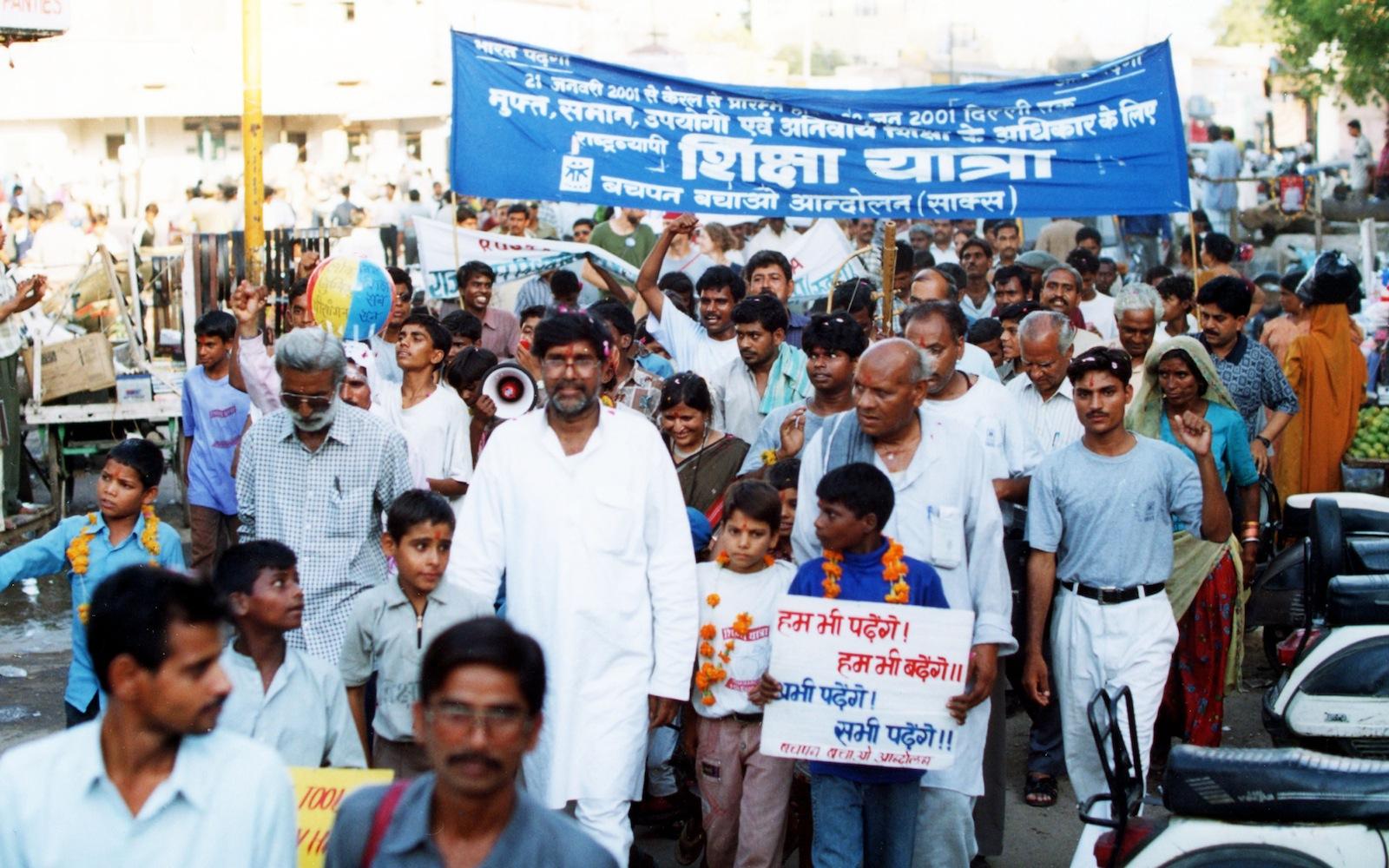
March against child labour
After almost 20 years’ work, Kailash and his colleagues had liberated tens of thousands of children and brought about major changes. But still, things were moving too slowly for Kailash.
“Let’s follow in Gandhi’s footsteps,” he said. “Let’s bring about a non-violent revolution and march all over India demanding justice!”
Kailash led the first march against child labour in 1992, along with activists and former child labourers. They walked 2000 km from the poor state of Bihar, where tens of thousands of children worked in the carpet industry, to the corridors of power in capital city Delhi. Along the way, they stopped in towns and villages to make speeches, sing and play music. Hundreds, sometimes thousands, of people walked with them some of the way from their home village. At night they slept in poor families’ homes.
After several marches through India, Kailash managed to get the whole world to join him on his journey. Their final destination was Geneva in Switzerland and the headquarters of the International Labour Organisation, ILO. Hundreds of thousands of children, parents and activists joined in this Global March Against Child Labour, each walking in their home countries, but between them covering a total of 80,000 km through 103 countries. Kailash and a group of liberated slave children arrived in Geneva just as a major ILO conference was starting. They were invited to speak, and for the first time, hundreds of global leaders listened to the slave children’s stories. Just a few years later, a new international agreement was signed to prevent and outlaw the worst forms of child labour.
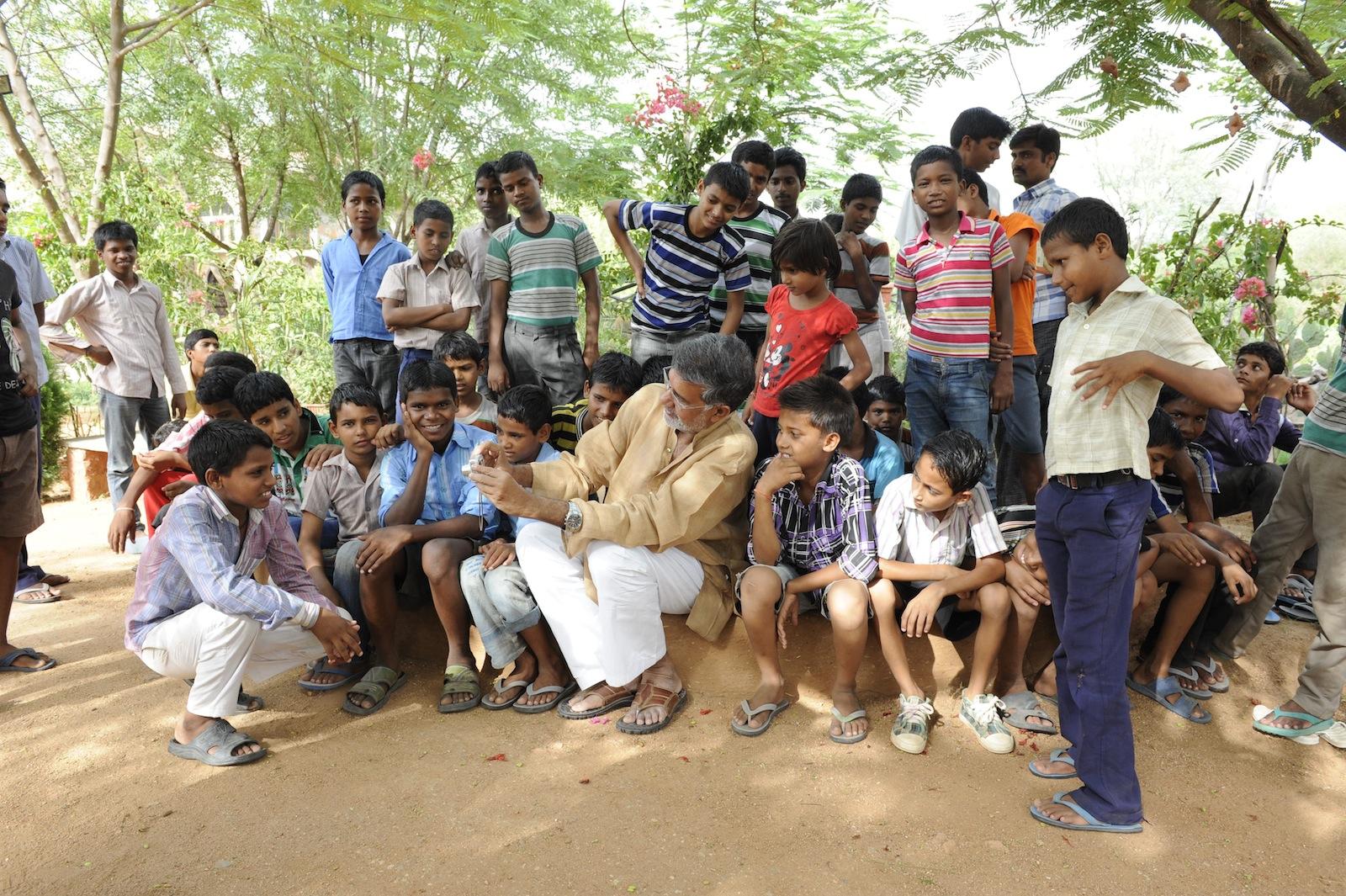
With the children
After over 30 years, Kailash has freed more than 83,000 children and brought about new laws and regulations in India and all over the world to protect children and give them more of a chance of accessing education. Today, Kailash travels the world speaking to presidents, the UN and heads of major corporations. But his favourite place to go is Bal Ashram, the home for liberated slave children that he built along with his wife Sumeda and other activists.
“I feel energised when I meet the children and listen to their thoughts and dreams for the future,” he says. “They are honest and open minded and their friendship means a lot to me. Lack of respect for children and childhood is the worst thing I know, and the main reason why at least 215 million of the world’s children are still in work. I won’t rest until the world is free of child labour and slavery.”
Photo: Kim Naylor
Related stories
Långgatan 13, 647 30, Mariefred, Sweden
Phone: +46-159-129 00 • info@worldschildrensprize.org
© 2020 World’s Children’s Prize Foundation. All rights reserved. WORLD'S CHILDREN'S PRIZE®, the Foundation's logo, WORLD'S CHILDREN'S PRIZE FOR THE RIGHTS OF THE CHILD®, WORLD'S CHILDREN'S PARLIAMENT®, WORLD'S CHILDREN'S OMBUDSMAN®, WORLD'S CHILDREN'S PRESS CONFERENCE® and YOU ME EQUAL RIGHTS are service marks of the Foundation.

